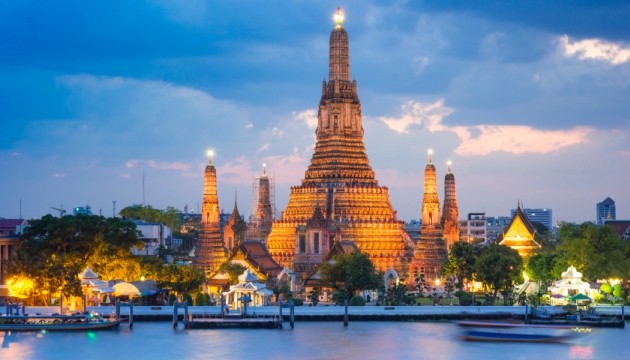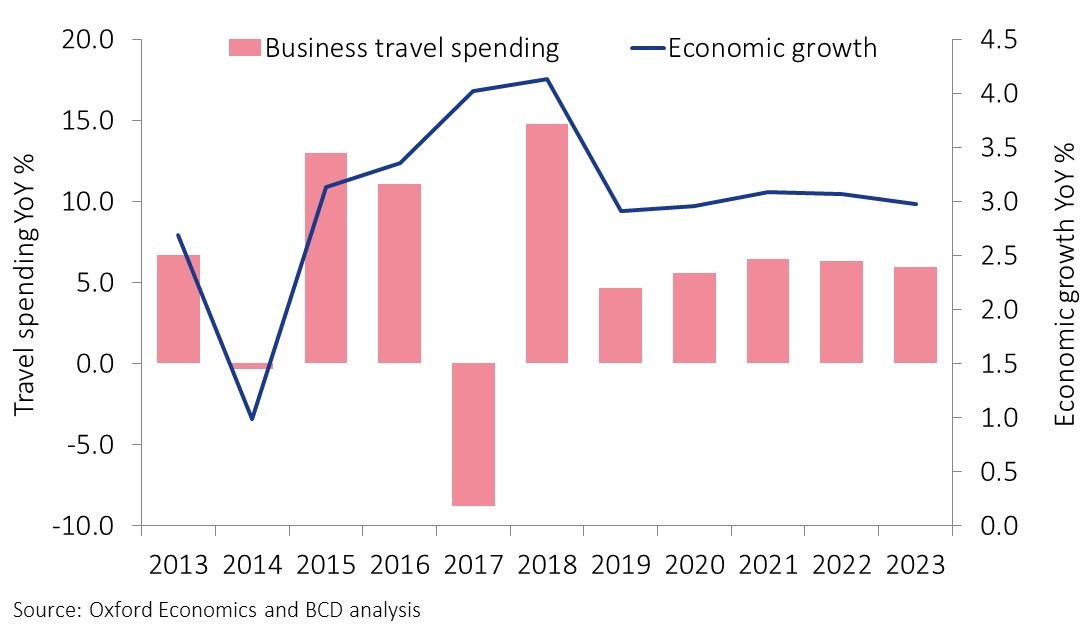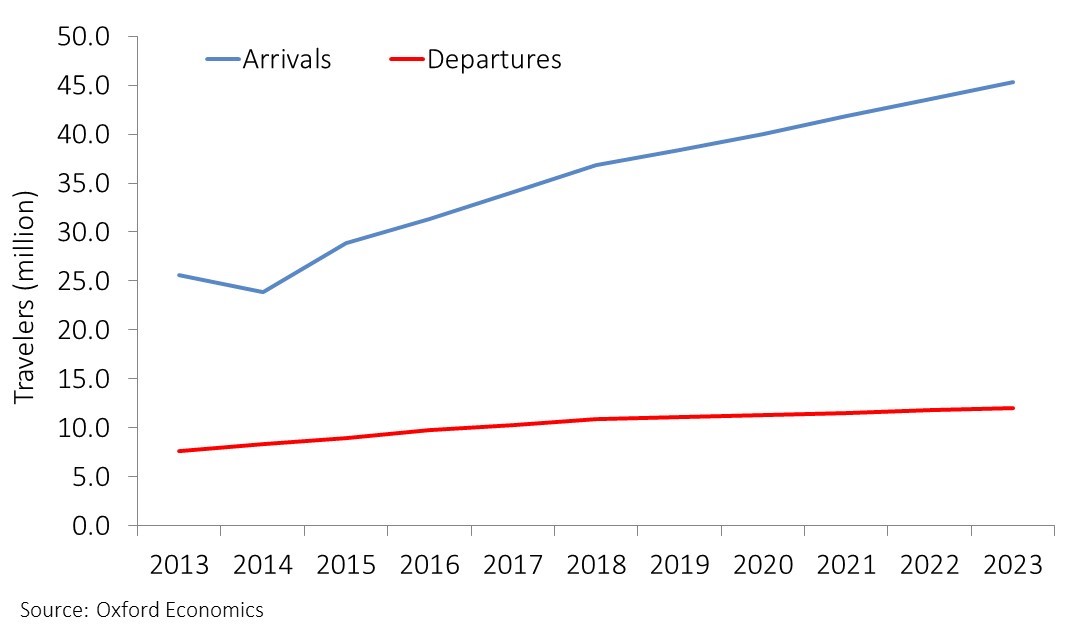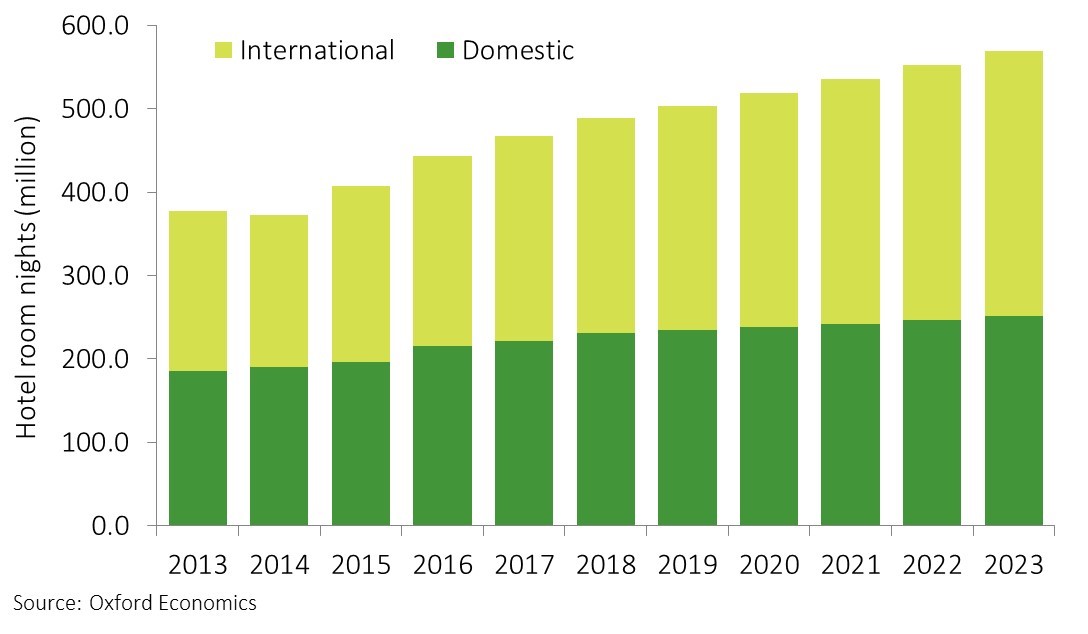
Business travel spending is forecast to grow 5.8% a year through 2023.
Companies spent almost US$14 billion on business trips to, from and within Thailand in 2018. Travel from abroad accounted for 57% of all spending; domestic travel accounted for 32%. Between 2013 and 2018, spending expanded 5.5% per year, on average. Outbound travel grew 25%, while inbound travel expanded a little more than 1%. Spending on domestic trips increased by 11% per year. Through 2023, business travel spending is forecast to grow 5.8% a year—breaking down to 7% for inbound, 3% for outbound and 5.3% growth for domestic trips.
Gain insights on markets around the world with BCD Travel’s 2020 Industry Forecast.
Economic environment
Economic growth and business travel spending
Click on image to enlarge
- A gross domestic product of more than US$507 billion makes Thailand the 26th-largest economy in the world and the seventh-largest Asian economy, behind Taiwan. Thailand’s economy is twice the size of the Hong Kong or Singapore economies.
- Economic growth is weakening because of the U.S.-China trade dispute and waning domestic consumer spending and fixed investments.
- The Bank of Thailand has cut interest rates and announced a US$10 billion fiscal stimulus package.
- Oxford Economics expects Thailand’s economic growth to slow from 4.1% in 2018 to 2.9% in 2019 and 3% in 2020.
- The military plays an important role in the country’s politics, which could limit government influence over economic activity.
Air
International travel
Click on image to enlarge
- International arrivals accounted for three-quarters of trips made to Thailand in 2018.
- Between 2013 and 2018, both inbound and outbound travel expanded by 7.5% per year.
- Chinese travelers to Thailand account for 29% of visits and rising. South Korea and Laos are emerging as new sources of tourism.
- Malaysia, Laos and Myanmar are the most popular destinations for Thai tourists.
- Thai Airways lost market leadership to low-cost carrier Thai AirAsia, the biggest airline in Bangkok, Phuket, Chiang Mai, Hat Yai and Chiang Rai.
- Foreign-backed LCCs, which also include Thai Lion Air and Thai VietJet, account for 49% of passengers carried on Thai airlines.
Accommodation
Hotel demand
Click on image to enlarge
- Between 2013 and 2018, total demand for hotel accommodation increased by almost 30% to 489 million room nights. International travelers accounted for 53% of the market.
- Through 2023, hotel demand is expected to expand 3.1% per year, with international at 4.3% and domestic at 1.7% growth.
- Chinese travelers accounted for almost a quarter of the rooms occupied by international travelers in 2018, up from 14% in 2013.
- Malaysia, Germany, the U.K., Russia, Japan and the U.S. each account for about 5% of international room nights.
- Market-leading international chain Accor has almost twice as many hotels as second-place Marriott. It offers all service tiers except economy.
- Third-place Centara Hotels & Resorts is the largest local chain. Its upper midscale to upscale properties are available in 14 destinations across the country.




